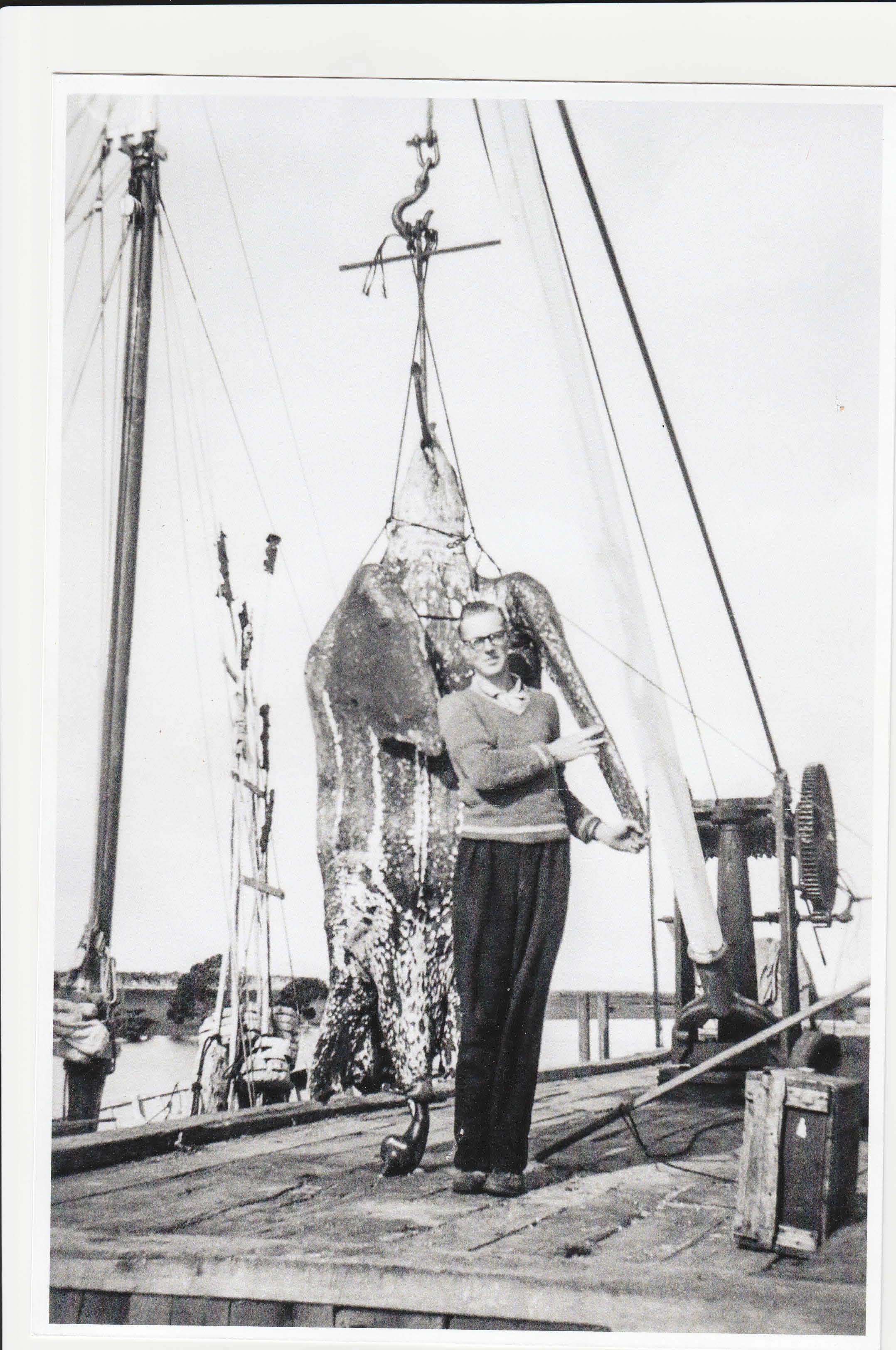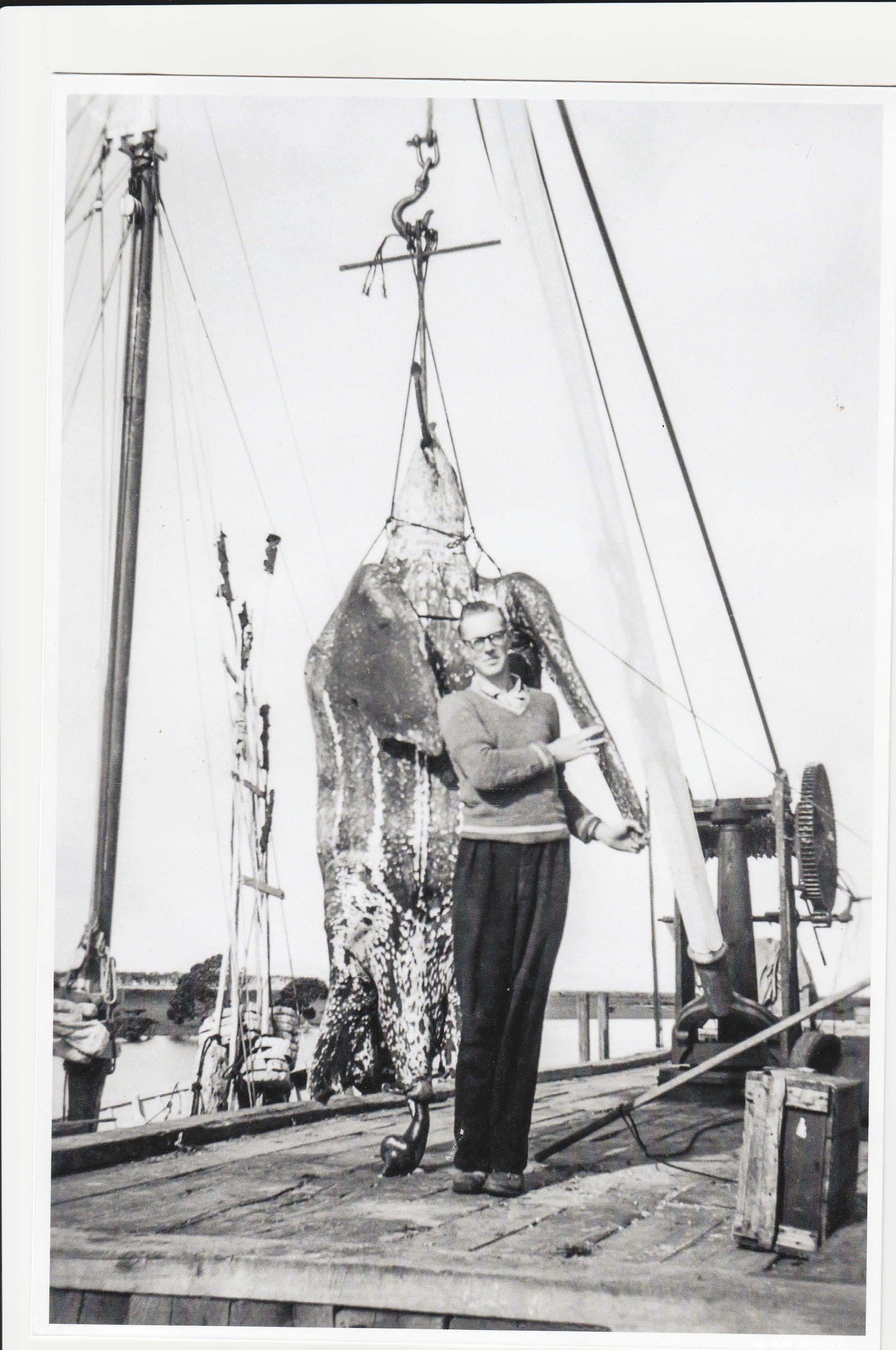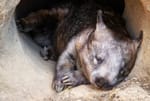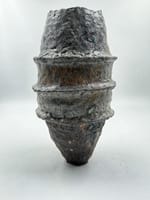With Zavier Evans
Leatherback sea turtles are big. The largest ever recorded was over 3m in length, and weighed 914kg. Their scientific name, dermochelys coriacea, translates directly to "leathery skin turtle".
These incredible creatures exist worldwide, and are the largest non-crocodilian reptiles. Leatherbacks have no gills, and need to surface regularly to breathe. With this in mind, it feels absurd that we have found them diving to depths of over 1,300 metres. Leatherbacks prey almost exclusively on jellyfish, eating up to 840kg of the gelatinous zooplankton in a single day, on average consuming around 73% of their body mass. This is vital for our commercial fishing industry, as these jellyfish blooms predate almost exclusively on the larval stages of the fish we hunt commercially, including herring, whiting, bluefin tuna, sardines and anchovies.
Adjacent is a photo of a truly colossal leatherback turtle. It was caught in 1960, accidentally, while longlining for sharks in Bass Strait, then hauled ashore out of curiosity at Port Franklin. Pictured next to it, for scale, is one Murray Cripps, of the venerable Cripps family that still fish the same waters today. An attempt was made to anchor the corpse in place for which to return for a souvenir (after all, what fisherman in the 60's didn't have a shelf of ocean curios displayed prominently in their house), however the sea reclaimed its behemoth and for us, the story ends there.

One curious trick these deep diving turtles utilise is known as "cloacial respiration", hereon referred to as butt breathing. Turtles have a high density of exposed blood vessels on their cloacia (the uh, out hole) which gives them the ability to diffuse oxygen and carbon dioxide in the water through the membranes of their butts. Some non-migratory turtle species use it during brumination to spend the whole winter submerged in the water without needing to surface.
Another crazy adaptation of leatherbacks is Temperature Dependant Sex-Determination. Essentially, the temperature of the eggs during incubation determines the sex of the offspring. It is hard to fathom how this is a viable way for a creature to continue its existence, and indeed there are complications with today's climate affecting the male to female ratio. One island of the northern cape called Raine island had 99.8% of subadult, and 86.8% of adult-sized turtles come out female as a result of human interference in vegetation that would have shaded the eggs, and as a result of human induced climate change.
This keystone species is sadly in decline despite having no natural predators, with around a third of autopsies showing intestinal plastic blockage, and an estimated 50,000 caught accidentally in fishing bycatch annually. The ocean's ecosystems exist in a fragile and complex balance, and we are only just now beginning to find out our effects on the underwater world and start to regulate our impacts. All hope isn't lost yet. Being such an interesting organism brings a lot of human attention, not to mention funding, and there are a number of conservation groups doing incredible research and on the ground work to help understand and mitigate our influence on these ecosystems. To find out more, visit the Sea Turtle Conservancy or 1millionturtles.com






